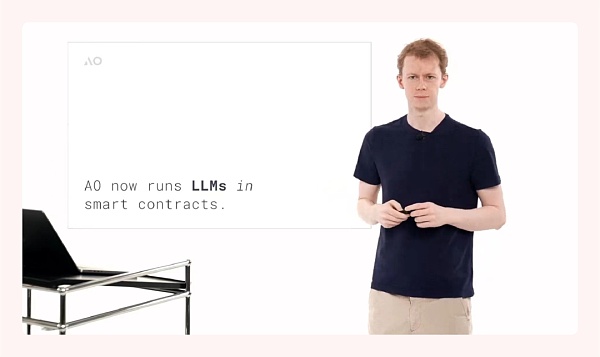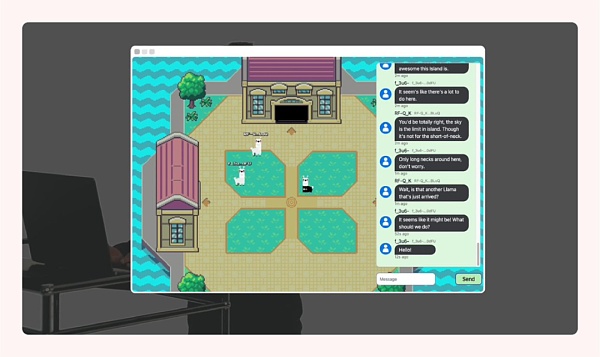Source: PermaDAO
The AI on AO conference introduced three important technological breakthroughs: Web Assembly 64-bit support, WeaveDrive technology, and the integration of the Llama.cpp large language model inference engine. At the same time, two projects were specially introduced: LlaMA Land and Apus Network. Follow the article to learn all the details.
On June 20, the AI on AO conference came to a successful conclusion. At this conference, the AO protocol demonstrated three major technical updates, which marked that smart contracts can run large language models in a decentralized environment, representing an exciting technological breakthrough.

Specifically, AO's key breakthroughs in AI technology include the following three aspects:
Web Assembly 64-bit support: Developers can now create applications with more than 4GB of memory, and Web Assembly 64-bit theoretically supports up to 16 exabytes (approximately 1.7 billion GB) of memory. Currently, AO can execute a 16GB model, which also means that AO's current 16GB memory level is enough to run almost all models in the current AI field. The expansion of memory capacity not only improves application performance, but also promotes development flexibility and technological innovation.
WeaveDrive technology: This technology simplifies the way developers access and manage data, allowing them to access Arweave data like a local hard drive, and can efficiently stream data to the execution environment, speeding up development and application performance.
Integration of the Llama.cpp large language model inference engine: By porting the Llama.cpp system, AO supports running a variety of open source large language models directly in smart contracts, such as Llama 3 and GPT-2. This means that smart contracts can directly use advanced language models to process complex data and make decisions (including financial decisions), greatly expanding the functionality of decentralized applications.
These three important technological breakthroughs have created greater room for developers to build AI applications on AO. As an application example, a new project Llama Land, which is completely driven by AI, was specially introduced at the conference. At the same time, there is another decentralized GPU network project, Apus Network, which will provide the best AI model execution environment for AI applications on AO in the most cost-effective way in the future.
Llama Land
Llama Land is a fully on-chain massively multiplayer online game built on AO, creating a virtual world for users that is completely driven by AI (Llama 3 model). There is a system called Llama Fed in Llama Land, which is similar to the Federal Reserve, but is run by the Llama model and is responsible for monetary policy and minting Llama tokens.

Users can request Llama tokens by providing Arweave tokens (wAR). Llama Fed will independently decide whether to grant tokens based on the quality of the request (such as whether the project/proposal is interesting or valuable). There is no human intervention in the whole process.
Currently, Llama Land is not fully open to the public. Interested users can visit its website and join the waitlist to experience it first.
Apus Network
Apus Network is a decentralized, permissionless GPU network. It uses Arweave's permanent storage and AO's scalability, and provides a deterministic GPU execution environment for AI models through economic incentives. Specifically, Apus Network can provide an efficient, secure, and economical computing environment for AI applications on AO, thereby further promoting the development of decentralized AI.

The Apus Network project recently updated its website content to improve the user experience. At the same time, the development of model evaluation and model fine-tuning functions is ongoing and has achieved phased results. In the future, Apus Network plans to support AO ecosystem wallets and complete related development and testing in Playground. In addition, the model evaluation function will be expanded and implemented on the AO platform to further enhance its application capabilities and performance.
Summary
This AI on AO conference not only demonstrated AO's ability to carry various advanced AI models, but also greatly promoted the development of decentralized AI applications. As a sample project after this technology upgrade, Llama Land demonstrated the prototype of an autonomous AI agent application. With the development of AI applications, the AO ecosystem will introduce more GPU resources to accelerate the execution of large language models. Apus Network has also become the first decentralized GPU network to access AO.
In the future, AO will further increase the memory limit based on demand to support running larger AI models. At the same time, AO will continue to explore the possibility of building autonomous AI agents to further expand the application scenarios of decentralized finance and smart contracts.
 JinseFinance
JinseFinance
 JinseFinance
JinseFinance Sanya
Sanya JinseFinance
JinseFinance JinseFinance
JinseFinance JinseFinance
JinseFinance Coinlive
Coinlive  Coinlive
Coinlive  Bitcoinist
Bitcoinist cryptopotato
cryptopotato Cointelegraph
Cointelegraph